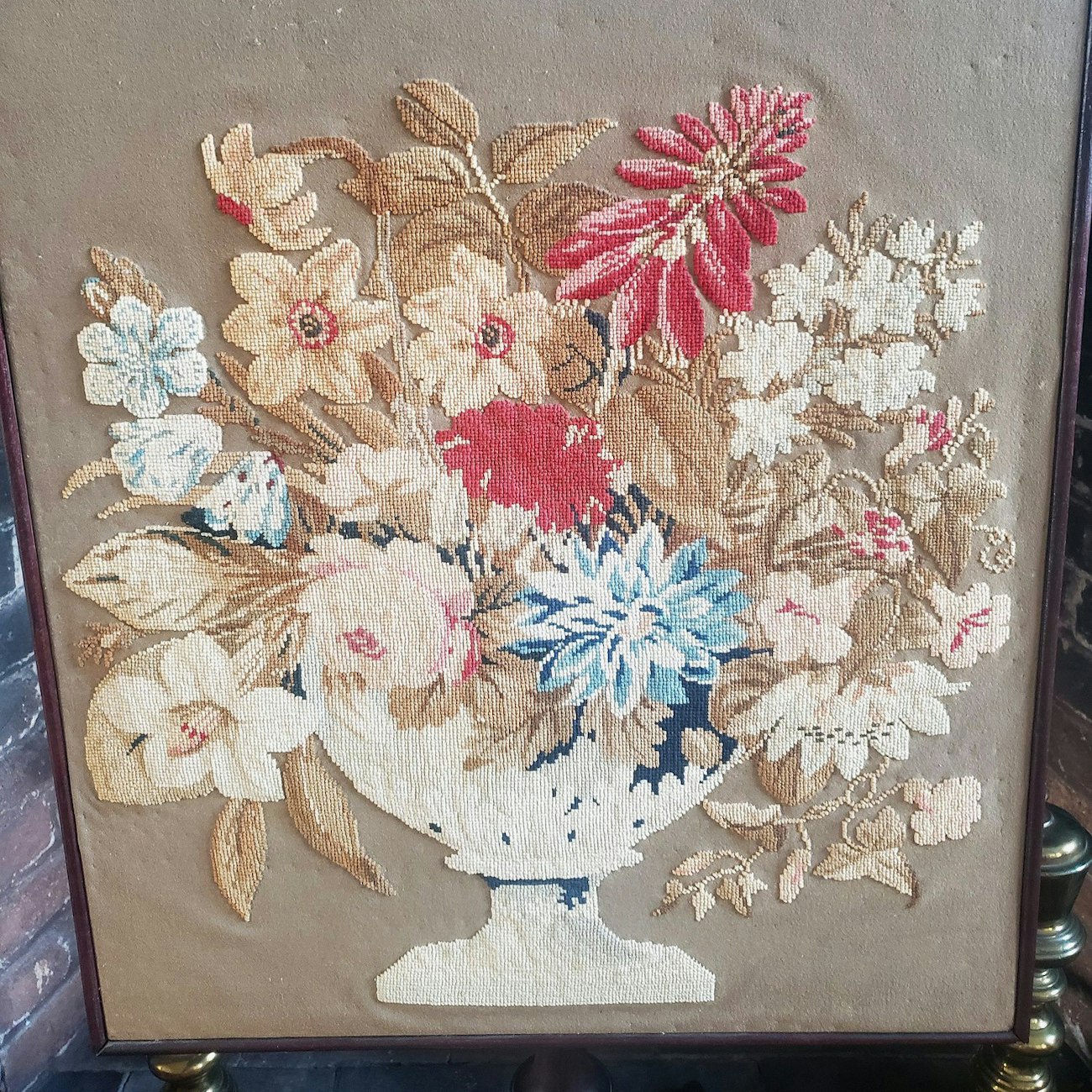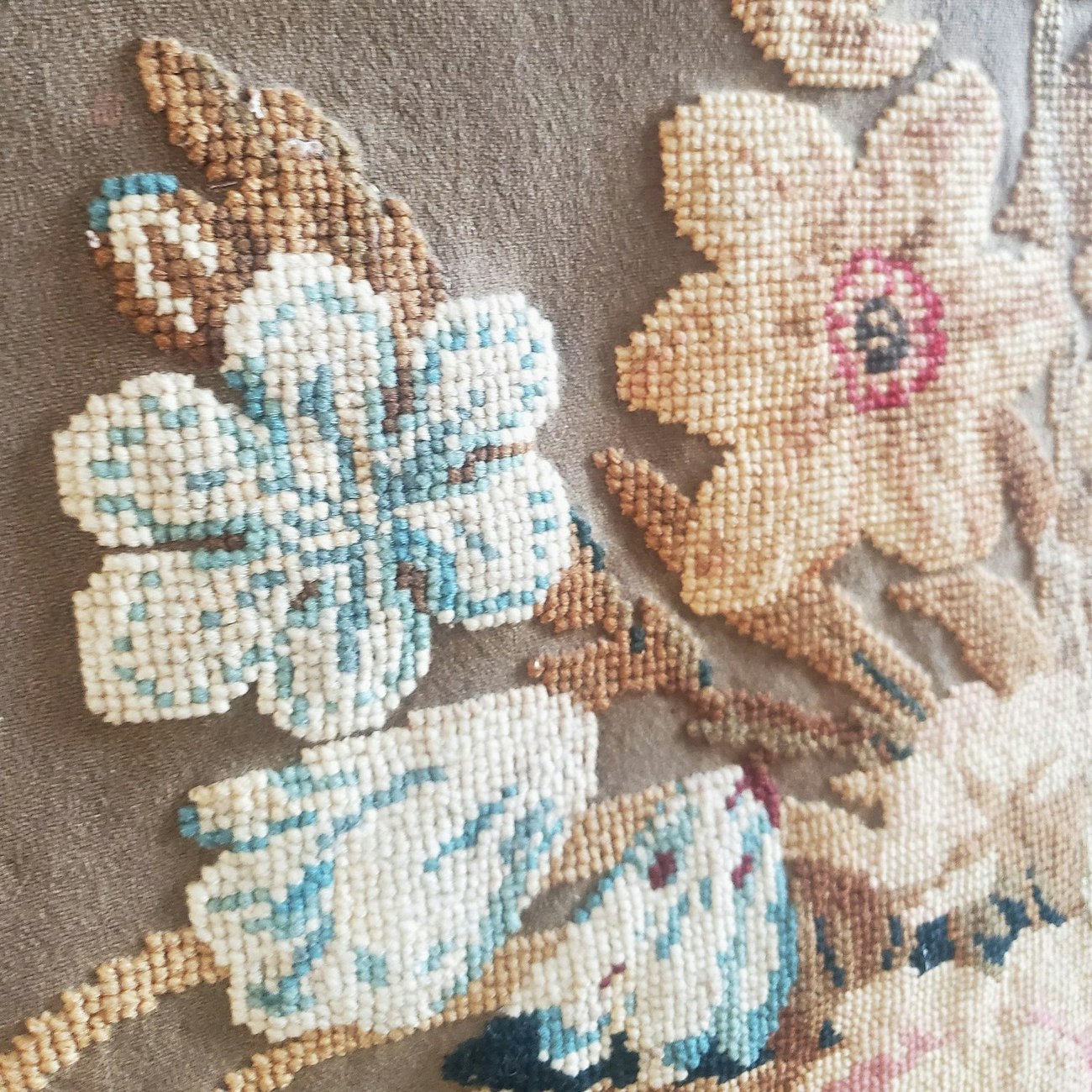Within the archives of Woodlawn, the collection of needlework includes bookmarks, embellished furnishings, and small decorative pieces. These pieces are the work of Eleanor “Nelly” Parke Custis Lewis, granddaughter of Martha Washington and step-granddaughter of George Washington. Missing in the collection is the needlework made by Sukey, Polly, Eliza, and Lucinda, all women who were enslaved by Nelly at Woodlawn.
 Embroidery created by Nelly Parke Custis Lewis
Embroidery created by Nelly Parke Custis Lewis
As a key member of Washington’s family, Nelly grew up at Mount Vernon, living a comfortable life, as was typical of a member of Virginia’s elite planter class. She was raised to be a charming hostess, impressing guests with her musical abilities and needlework talents. She was expected to be the mistress of her own household one day.
When Nelly married Lawrence Lewis, nephew of George Washington, in 1799, Washington gifted the couple a section of the Mount Vernon property. The Lewises’ home, Woodlawn, was completed in 1805. At Woodlawn, as the mistress of the plantation, Nelly was an authority figure. Although she was expected to keep the home in order and raise the children, she was also in charge of overseeing the domestic work of the enslaved laborers. Upon the death of Martha Washington in 1802, the Lewises had inherited a number of Martha’s enslaved workers, some of whom Nelly knew from her time growing up at Mount Vernon.
 Close-up of the embroidery
Close-up of the embroidery
Nelly’s position at Woodlawn allowed her to devote her time to decorative needlework, while women like Sukey, Polly, Eliza, and Lucinda were responsible for tasks like mending clothing and household fabrics. While many of the items Nelly made were for domestic comfort, like an embroidered fireplace screen, others were given as gifts to friends and family. These pieces of needlework have been preserved largely due to Nelly’s connection to George Washington.
Currently, the Woodlawn collection does not include any surviving pieces made by enslaved workers, though it is known those pieces existed. After Nelly’s grandson Sonny nearly drowned, Nelly wrote that Sukey had made a hat with blue glass beads for the child. Sukey likely believed the beads provided protection for Sonny, as did many people of African descent. Unfortunately, the blue-beaded hat made by Sukey has not been recovered. Today, Woodlawn is devoted to discovering and sharing the stories of all the needleworkers who lived there.
Elizabeth Reese is the associate manager of marketing at Woodlawn & Pope-Leighey House, a National Trust for Historic Preservation site. The site will host the 61st Annual Woodlawn Needlework Show, taking place from March 1–31, 2024. For more information, please visit www.woodlawnpopeleighey.org.

